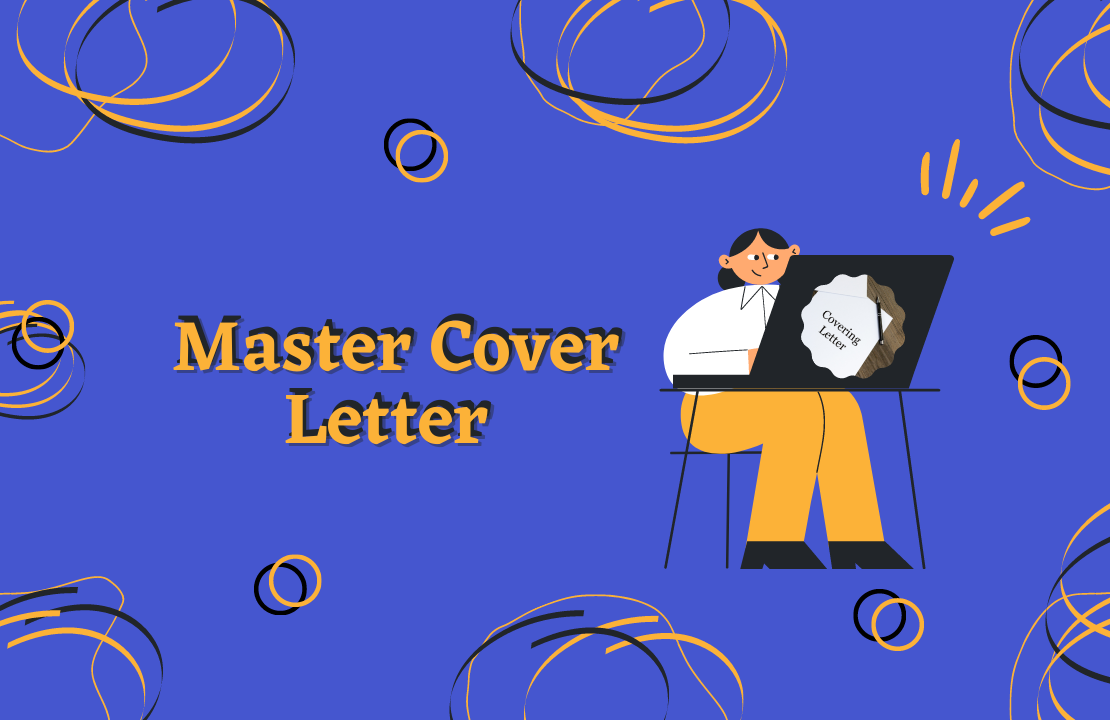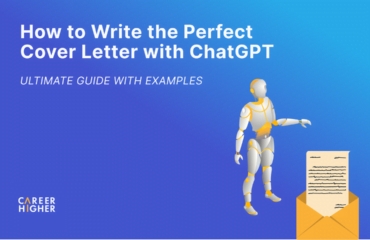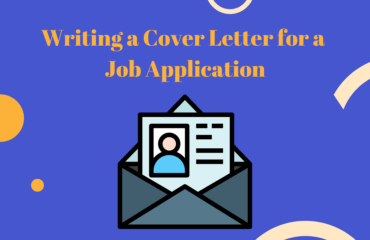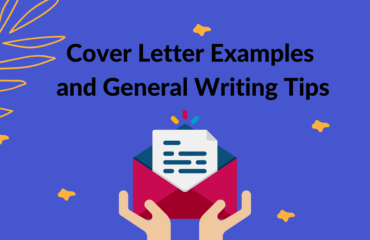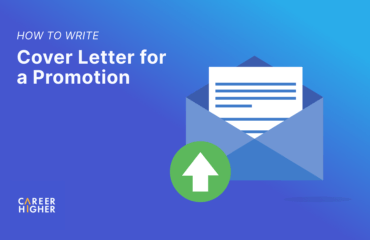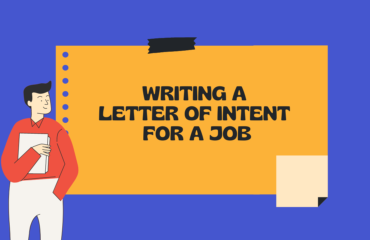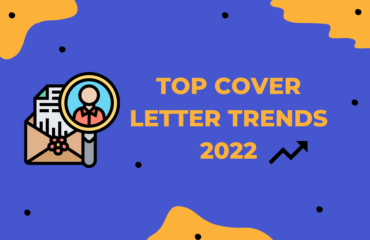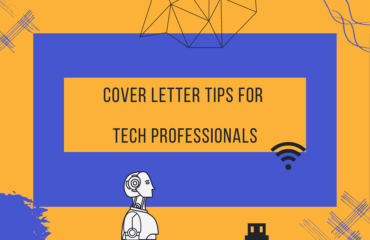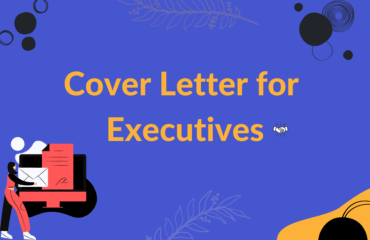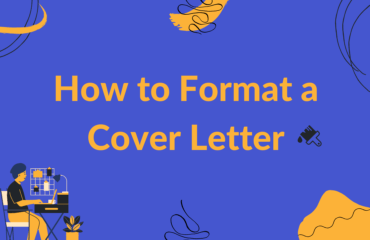Table of Contents
A cover letter is your first step to establishing your personal brand during your job search. Creating one according to best practices increases your chances of getting selected for an interview and landing your dream role. According to recent studies, 49% of HR managers consider a cover letter to be a great tool to boost a candidate’s resume. In addition, 56% of employers prefer to receive a customized version during the job application process.
We understand that creating a cover letter tailored for each job application can be a daunting investment of effort and time. While some candidates don’t submit a cover letter, for this reason, we strongly recommend taking the extra mile to maximize your job search success. As a matter of fact, a cover letter can be written in advance as a template. This will serve as your master cover letter that you can easily tweak and use for various applications. In this article, we will guide you on how to create one that works for any job you want to apply to.
The top section of a cover letter typically comprises your contact information. This includes your full name, address, phone number, email, LinkedIn page URL, and personal website if you have one. Aside from this, we also suggest using your target job title as your own title to showcase commitment and alignment with what employers are looking for.
If you’re planning to relocate to a new region or country, we recommend using an address aligned with your target geography, even if you don’t currently reside there. Then, explain that you are in the process of relocating. This shows that you are committed to moving, which makes a difference to employers, as they typically focus on local candidates. You wouldn’t want to miss out on any opportunities just because you’re currently living outside their area, right?
When it comes to email, it is best practice to use a Gmail address with the format name.surname@gmail.com. Using a professional email address like this makes it easier for prospective employers to find and remember you. An email address may seem not to play a significant role, but it could potentially break your job search if ignored. In fact, your email address is part of your brand. Hence, we advise avoiding overly complicated and unprofessional words in your email address that can make you appear untrustworthy or amateur—for example, janesmith.partyqueen@gmail.com or john.smith08081978@gmail.com.
2. Use an appropriate salutation
The way you start your master cover letter is crucial to set its proper tone. According to best practices, “Dear” is the most appropriate cover letter salutation, and using it is the best option. To impress hiring professionals, we suggest following your greeting with their first names. This way, you can be perceived as someone who genuinely wants the job for making extra effort to find the name of the person responsible for hiring.
In some cases, the name of the contact person is indicated on the job listing. Otherwise, there are several ways to find it out. You can look on the company website, search on LinkedIn or ask your professional network if they know someone at the company. Another effective way is to call your target department and check directly with them. You can explain that you’re applying for a job and would like to know the hiring manager’s name. However, if you are still unable to find out their name, you can use other alternatives, such as Dear Recruitment Team or Dear Hiring Manager.
We do not suggest using “Hello”, “Hi” or “Hey there”, as these can make your cover letter unprofessional. “Dear Sir/Madam” or “To Whom It May Concern”, on the other hand, is outdated, generic, and too impersonal. Using such greetings makes an unprofessional and casual impression on your potential employers. So, make sure to make it specific, professional, and polite without being too formal.
3. Break down the main body
While the body is the most critical part of a cover letter, most candidates consider it to be the hardest part. This section is where you should demonstrate your motivation for your target job and your ability to help the company realize its goals and objectives. To ensure effective communication of your fit with the target job, we suggest creating four to five paragraphs – with each paragraph focusing on the following aspect:
a) Introduction
The first paragraph of the body should clearly state the purpose of your cover letter, who you are, and what expertise you offer that makes you a suitable candidate for the job. Provide readers a quick window into your significant experience or accomplishment that would make you an asset to the company. This way, you can instantly grab the attention of the hiring manager, motivating them to read further.
As hiring professionals spend only a matter of seconds reviewing a cover letter, it is imperative to ensure that your introductory paragraph is captivating and concise. Keep it short and on point with one to three sentences. Making it too long can cause hiring managers to lose interest quickly, reducing your chances of landing the job.
b) The second and third paragraphs
The next two paragraphs are the meat of your cover letter body. This is where you sell your candidacy and convince your target employer that you are the right person for the position. Therefore, in this section, you should highlight your unique qualifications aligned with the company’s needs.
What employers are looking for are candidates who can help them solve problems and achieve their desired outcomes. Hence, it is crucial to communicate what you bring to the table in an accurate and convincing manner. This can be done by defining some examples of the work you performed and the results you achieved in your previous company. Emphasize only the wins or successes that are relevant to the specific role you’re applying for.
Remember, the more your experience, skills, and accomplishments match the company’s needs, the higher your chances of getting selected for an interview. So, avoid making mistakes of randomly picking what to include in your cover letter. Gain a deeper understanding of the company’s focus and objectives by reviewing the job description and visiting their website. This way, you can better articulate your achievements and demonstrate how you can help your potential employer meet their goals.
c) The employer paragraph
The fourth paragraph of your cover letter should convey why the role is your dream job, and the company is your employer of choice. You can do this by showcasing your genuine interest in the job purpose, company vision, mission, culture, and products/services or industry. This is a great opportunity to elaborate on what attracted you to this type of work, show your motivation, and summarize why the company should choose you for an interview.
We highly suggest making some extra time and effort to conduct background research about the company. Go through their website or social media platforms, such as LinkedIn, to find out more about their values, mission, or achievements. This will enable you to better demonstrate that you’re a strong culture fit and communicate why they are a perfect fit for you and your career goals.
d) Closing
The last part of the cover letter body is your closing paragraph. To conclude your letter, thank the employer for taking the time to consider your application and include a clear call to action. You can request a meeting or add something like “I am looking forward to discussing this opportunity further at your convenience” or “I would welcome an opportunity to discuss this role further in a personal interview”. You can also advise that you enclosed your resume so that they can learn more about your industry background and qualifications.
Additional tips & tricks in creating the body
Creating a cover letter body that convinces your target employer that you’re the strongest candidate is not an easy feat. We understand how challenging it can be to convey all the value you offer as a potential employee in a few paragraphs. That is why, in this part of the article, we will share some additional tips on how to create a compelling master cover letter body.
a) Align the tone and language with your target job, company, or industry
A cover letter must be written in the right language and tone, reflecting the culture and environment of your target employer. While most candidates think that writing formally is the appropriate way, it is not always the case. It is more important to match your tone and language to the position, company, or industry you are applying to better convey your unique value and why you’re a great candidate.
We recommend reading the job description thoroughly or exploring the company’s website and social media channels. This way, you can get a sense of your target employer’s culture and how they regard themselves – profound, funny, casual, or straightforward. Then, use the same kind of tone and language when customizing your cover letter. Above all else, no matter what your cover letter tone is, make sure to keep everything positive, professional, and engaging.
b) Use professional storytelling
Your cover letter should not just list your experience, skills, and achievements, but it must also convey your personality, build your brand, and tell your story. One of the powerful ways to accomplish this is through storytelling. Leveraging this in your cover letter can make your career journey more relatable. Thereby, increasing the chances that hiring professionals will read your cover letter from start to finish.
A story is far more engaging and interesting to read than just a mere list of your industry background and accomplishments. It introduces a bit of your character and brings a unique feel to hiring professionals, which can make a huge difference in the job hiring process. So, create a compelling narrative that links to what the employer is looking for.
c) Add keywords
Employers have specific keywords they look for to determine if you are a highly qualified applicant for the position. These keywords are powerful words and phrases that relate directly to your target job and showcase your experience, capabilities, and achievements. Adding these to your cover letter will enable hiring professionals to see how and why you are an excellent fit for the role.
There are three general categories of keywords that you can use in your cover letter. These are skills-based keywords, results-oriented keywords, and recognition keywords. Let’s explore each one of them with some examples below:
a) Skills-based keywords are words or phrases that emphasize your specific hard skills and provide evidence of how these skills match the job qualifications. These include:
- Developed
- Created
- Planned
- Directed
- Delegated
b) Results-oriented keywords include words or phrases that showcase how you have helped your previous company achieve something. Some examples are:
- Improved
- Saved
- Increased
- Upgraded
- Boosted
c) Recognition keywords are words or phrases that highlight honors, awards, or any form of accomplishments by being recognized for something in your past job. Here are some examples:
- Recognized for
- Awarded with
- Promoted to
- Credited with
- Chosen for
4. Include the right complimentary close
Closing a cover letter appropriately should never be underestimated. Choose the wrong complimentary closing, and you might end up ruining the credibility you’ve established in the rest of your cover letter. Hence, ending it in a professional and polite manner is imperative to maintain your first good impression and uplift your candidacy.
We recommend using “Yours Sincerely” if you have included the contact person’s name in the salutation or “Yours Faithfully” if you didn’t. Remember, a cover letter is a formal correspondence, so be careful not to use an overly casual or friendly complimentary closing, such as “Cheers” or “Best Wishes”. Then in the next line, write your full name. A signature would be a nice touch but is not mandatory.
Master Cover Letter Formatting Tips
Hiring managers do not only look at your cover letter details, but they also have certain expectations when it comes to how presentable, organized, and consistent your letter is. Hence, following the standard cover letter format and layout is a must. While it may be tempting to use graphics or colorful texts as a way to stand out visually, the best way to go is to keep it simple and professional. Let’s have a look at some ideas on how to format a cover letter effectively.
a) Font name and font size
When it comes to fonts, simple and professional is the new trend. Using a simple one for your cover letter ensures that it would be clear and easy to read. The most recommended fonts are Garamond, Helvetica, Calibri, Arial, and Times New Roman. Avoid using decorative font styles. Complicated and fancy fonts can make it harder for the ATS software and the human eye to read your cover letter, which may prevent your application from advancing to the next stage.
The size of your cover letter font also matters a lot, so make sure it is legible. The standard font size is between 10 and 12 points. Using anything smaller than that may impact readability, and anything larger can make your cover letter look unprofessional. Nonetheless, in general, your cover letter’s font name and size should match the ones that you used in your resume.
b) Margins and line spacing
The ideal margin for a cover letter should be no larger than 1 inch and no smaller than 0.7 inches all around. When it comes to line spacing, you can use between 1 to 1.5 depending on how long or short your cover letter content is. Additionally, don’t forget to leave an extra line between each section and paragraph. Following these standard sizes will give your cover letter an uncluttered look, enhancing its readability. Above all else, keep your margin and line spacing consistent to ensure your content is balanced on the page.
It is indeed challenging to stand out on your resume alone. That is why we strongly suggest customizing a compelling cover letter for each job application to distinguish yourself from everyone else. We understand that it can be a daunting, time-consuming process, but a master cover letter will help you do the job. You can start creating one by following the above structure and tips. Once you have the skeletal framework, it would be easy for you to tweak a few details to align the content with your desired role.
References
2) CareerHigher, 2021. How to Create a Best-Practice Resume. Available at: https://www.careerhigher.co/career-advice/how-to-create-a-best-practice-resume-1501/
3) CareerBuilder, 2015. Employers Reveal Biggest Resume Blunders in Annual CareerBuilder Survey. Available at: http://press.careerbuilder.com/2015-08-13-Employers-Reveal-Biggest-Resume-Blunders-in-Annual-CareerBuilder-Survey
4) SAGE journals, 2009. Employer Preferences for Résumés and Cover Letters. Available at: https://journals.sagepub.com/doi/abs/10.1177/1080569909334015
5) World Education Services, 2016. Top 6 Ways Your Emails Could Ruin Your Job Search. Available at: https://www.wes.org/advisor-blog/ways-emails-could-ruin-your-job-search/
6) CareerHigher, 2021. Why You Need a Cover Letter in Your Job Application. Available at: https://www.careerhigher.co/career-advice/why-you-need-a-cover-letter-in-your-job-application-1827/
7) CareerHigher, 2021. 10 Job Interview Types You Will Encounter. Available at: https://www.careerhigher.co/career-advice/10-job-interview-types-you-will-encounter-1892/
8) CareerHigher, 2021. 5 Ways to Identify Your Perfect Employer. Available at: https://www.careerhigher.co/career-advice/5-ways-to-identify-your-perfect-employer-1633/
9) CareerHigher, 2021. How to Set Long-Term Career Goals Effectively. Available at: https://www.careerhigher.co/career-advice/how-to-set-long-term-career-goals-effectively-1657/
10) CareerHigher, 2021. Cover Letter Language & Tone Of Voice- Tips & Tricks. Available at: https://www.careerhigher.co/career-advice/cover-letter-language-tone-of-voice-tips-tricks-123140/
11) CareerHigher, 2021. Elevate Your Cover Letter through Storytelling. Available at: https://www.careerhigher.co/career-advice/leveraging-storytelling-to-write-a-cover-letter-123269/
